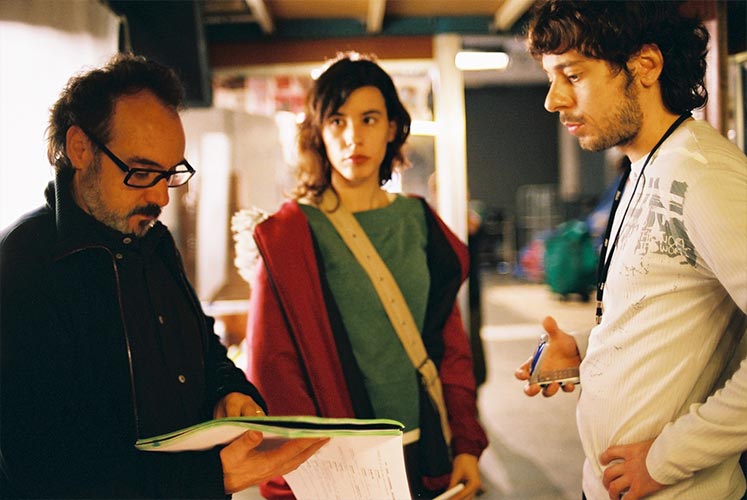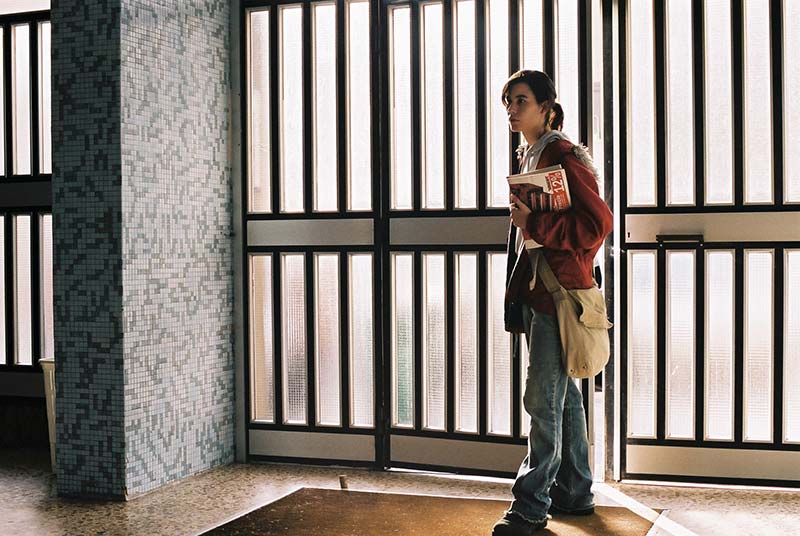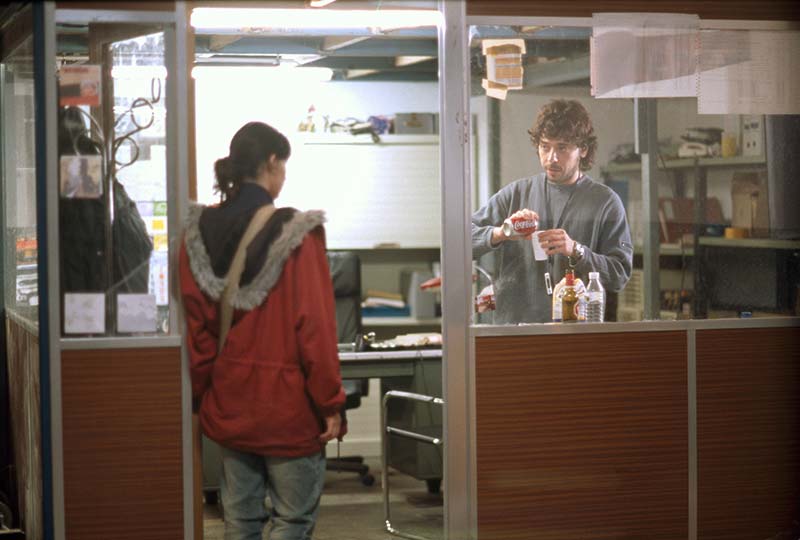

The Straight Line
José María de Orbe
2006
Synopsis
Noelia is about to turn 30. She lives on the outskirts of Barcelona and works nights in a gas station. During the day, she distributes junk mail. She has no free time. She finally quits her night job and leaves the house she shares with Rosa. She doesn’t say goodbye to anyone and leaves no trace as to her whereabouts. She works hard all day, has no friends and doesn’t look for any. She seems anonymous, just one more young woman in any big city surrounded by people like Lucas, Nico, Rosa, the boss, who all have their little conflicts, their little hopes, their little daily struggle to survive. The straight line is an urban story about a young woman, Noelia, who behaves as the same city where she lives in, growing and moving forward in an imaginary straight line that takes her from a work to another, from a house to another, wandering aimlessly without stopping, without a break and without knowing where she is going to.
She seems anonymous, just one more young woman in any big city.
TECHNICAL DATA
Original Title: LA LÍNEA RECTA
Year: 2006
Director: José María de Orbe
Country: España
Format: 35mm, color, 1:1,85
Length: 95 min
Lenguage: Castellano
Shooting Locations: Barcelona y alrededores
Production Companies:
Fresdeval Films (Spain)
In Vitro Films (Spain)
With the support of:
RTVE (Televisión Española)
TVC (Televisió de Catalunya)
ICAA (Ministerio de Cultura)
ICEC (Generalitat de Catalunya)
ICO (Instituto de Crédito Oficial)
INTERNATIONAL PREMIERE
IFF Gijón 2006
NATIONAL PREMIERE
April 27, 2007
2006
IFF Gijón 2006, Official Selection
2007
IFF Buenos Aires, Official Selection
IFF San Sebastian, Made In Spain
Madridimagen, Official Selection
IFF Estoril, Official Selection
2008
Annecy Spanish Cinema Biennial, Official Selection
Cinelatino Film Festival, Official Selection






NOELIA: Aina Calpe Serrats
LUCAS: Alejandro Cano
ROSA: Blanca Apilánez
JEFE: Ferran Madico
NICO: Sergi Ruiz
Director: José Mª de Orbe
Script: José Mª de Orbe y Daniel V. Villamediana
Executive Producer: María José Díez
Producers: Jaime Rosales, Ricard Figueras
Associate Producer: José María de Orbe
Production Manager: María José Díez
Director of Photography: David Valldepérez
Art Director: Rebeca Comerma
Casting Director: Pep Armengol
Sound Recordist: Eva Valiño
Editor: Nuria Esquerra
First Assistant Director: Àlex Vilà
Location Manager: Ismael Glück


TRAILER OFICIAL
"The significant subject here is the inherent lightness of the insignificant and ephemeral"






Director's notes
José María de Orbe
“We fool ourselves into believing we're something special, but in reality we're just the result of a chemical process, a biological impulse, a genetic deviation. It's going to be a cruel film, and I really like that”
Michelangelo Antonioni
La línea recta is an open film focusing on the life of a character, the insignificant daily events of ordinary life and the passing of time, as seen through the eyes that, from some distance, observe Noelia, the leading actress, in her working and social environment during a brief period of time of approximately a month. Noelia’s relationships with her work colleagues, the woman with whom she shares an apartment, the hallways of the buildings where she delivers commercial leaflets serve as the setting for a plot without major events that does not employ the characteristic resources of conventional fiction.
There is no beginning or end, or transformation of characters. Noelia’s life is reflected on the screen without major events, with its ups and downs, its little surprises and its high doses of everyday life. The significant subject here is the inherent lightness of the insignificant and ephemeral.


During the filming we combined the techniques specific to fictional films with others from documentary films. The voices and situations taking place in the hallways of apartments are authentic, taken from hidden sound recordings.


The structure of the film is based on the relationship between the characters and their environment and the succession of seemingly straightforward images lacking dramatic content.
Personally, I have tried to propose the most transparent perspective possible by providing the characters and the spectator with full leadership. At the end of the day, it is the spectator who will complete the film with his own interpretation.




PICTURES: Andrea Guzmán